pytest 架构是什么?
首先,来看一个 pytest 的例子:
collected 1 item
test_a.py . [100%]
============ 1 passed in 0.02s =======================
复制代码
输出结果很简单:收集到 1 个用例,并且这条测试用例执行通过。
此时思考两个问题:
pytest 如何收集到用例的?
pytest 如何把 python 代码,转换成 pytest 测试用例(又称 item) ?
pytest 如何做到收集到用例的?
这个很简单,遍历执行目录,如果发现目录的模块中存在符合“ pytest 测试用例要求的 python 对象”,就将之转换为 pytest 测试用例。
比如编写以下 hook 函数:
def pytest_collect_file(path, parent):
print("hello", path)
复制代码
hello C:\Users\yuruo\Desktop\tmp\tmp123\tmp\testcase__init__.py
hello C:\Users\yuruo\Desktop\tmp\tmp123\tmp\testcase\conftest.py
hello C:\Users\yuruo\Desktop\tmp\tmp123\tmp\testcase\test_a.py
复制代码
会看到所有文件内容。
如何构造 pytest 的 item?
pytest 像是包装盒,将 python 对象包裹起来,比如下图:
当写好 python 代码时:
会被包裹成 Function :
可以从 hook 函数中查看细节:
def pytest_collection_modifyitems(session, config, items):
pass
复制代码
于是,理解包裹过程就是解开迷题的关键。pytest 是如何包裹 python 对象的?
下面代码只有两行,看似简单,但暗藏玄机!
把代码位置截个图,如下:
我们可以说,上述代码是处于“testcase 包”下的 “test_a.py 模块”的“test_a 函数”, pytest 生成的测试用例也要有这些信息:
处于“testcase 包”下的 “test_a.py 模块”的“test_a 测试用例:
把上述表达转换成下图:
pytest 使用 parent 属性表示上图层级关系,比如 Module 是 Function 的上级, Function 的 parent 属性如下:
<Function test_a>:
parent: <Module test_parse.py>
复制代码
当然 Module 的 parent 就是 Package:
<Module test_parse.py>:
parent: <Package tests>
复制代码
注意大小写:Module 是 pytest 的类,用于包裹 python 的 module 。Module 和 module 表示不同意义。
这里科普一下,python 的 package 和 module 都是真实存在的对象,你可以从 obj 属性中看到,比如 Module 的 obj 属性如下:
如果理解了 pytest 的包裹用途,非常好!我们进行下一步讨论:如何构造 pytest 的 item ?
以下面代码为例:
构造 pytest 的 item ,需要:
构建 Package
构建 Module
构建 Function
以构建 Function 为例,需要调用其 from_parent()方法进行构建,其过程如下图:
从函数名 from_parent,就可以猜测出,“构建 Function”一定与其 parent 有不小联系!又因为 Function 的 parent 是 Module :
根据下面 Function 的部分代码(位于 python.py 文件):
class Function(PyobjMixin, nodes.Item): # 用于创建测试用例 @classmethod def from_parent(cls, parent, **kw): """The public constructor.""" return super().from_parent(parent=parent, **kw) # 获取实例 def _getobj(self): assert self.parent is not None return getattr(self.parent.obj, self.originalname) # type: ignore[attr-defined] # 运行测试用例 def runtest(self) -> None: """Execute the underlying test function.""" self.ihook.pytest_pyfunc_call(pyfuncitem=self)
复制代码
得出结论,可以利用 Module 构建 Function!其调用伪代码如下:
Function.from_parent(Module)
复制代码
既然可以利用 Module 构建 Function, 那如何构建 Module ?
当然是利用 Package 构建 Module!
Module.from_parent(Package)
复制代码
既然可以利用 Package 构建 Module 那如何构建 Package ?
别问了,快成套娃了,请看下图调用关系:
pytest 从 Config 开始,层层构建,直到 Function !Function 是 pytest 的最小执行单元。
如何手动构建 item?
手动构建 item 就是模拟 pytest 构建 Function 的过程。也就是说,需要创建 Config ,然后利用 Config 创建 Session ,然后利用 Session 创建 Package ,…,最后创建 Function。
其实没这么复杂, pytest 会自动创建好 Config, Session 和 Package ,这三者不用手动创建。
比如编写以下 hook 代码,打断点查看其 parent 参数:
def pytest_collect_file(path, parent):
pass
复制代码
如果遍历的路径是某个包(可从 path 参数中查看具体路径),比如下图的包:
其 parent 参数就是 Package ,此时可以利用这个 Package 创建 Module :
编写如下代码即可构建 pytest 的 Module ,如果发现是 yaml 文件,就根据 yaml 文件内容动态创建 Module 和 module :
from _pytest.python import Module, Packagedef pytest_collect_file(path, parent): if path.ext == ".yaml": pytest_module = Module.from_parent(parent, fspath=path) # 返回自已定义的 python module pytest_module._getobj = lambda : MyModule return pytest_module
复制代码
需要注意,上面代码利用猴子补丁改写了 _getobj 方法,为什么这么做?
Module 利用 _getobj 方法寻找并导入(import 语句) path 包下的 module ,其源码如下:
# _pytest/python.py Moduleclass Module(nodes.File, PyCollector): def _getobj(self): return self._importtestmodule()def _importtestmodule(self): # We assume we are only called once per module. importmode = self.config.getoption("--import-mode") try: # 关键代码:从路径导入 module mod = import_path(self.fspath, mode=importmode) except SyntaxError as e: raise self.CollectError( ExceptionInfo.from_current().getrepr(style="short") ) from e # 省略部分代码...
复制代码
但是,如果使用数据驱动,即用户创建的数据文件 test_parse.yaml ,它不是 .py 文件,不会被 python 识别成 module (只有 .py 文件才能被识别成 module)。
这时,就不能让 pytest 导入(import 语句) test_parse.yaml ,需要动态改写 _getobj ,返回自定义的 module !
因此,可以借助 lambda 表达式返回自定义的 module :
如何自定义 module
这就涉及元编程技术:动态构建 python 的 module ,并向 module 中动态加入类或者函数:
import types# 动态创建 modulemodule = types.ModuleType(name)def function_template(*args, **kwargs): print(123)# 向 module 中加入函数setattr(module, "test_abc", function_template)
复制代码
综上,将自己定义的 module 放入 pytest 的 Module 中即可生成 item :
# conftest.pyimport typesfrom _pytest.python import Moduledef pytest_collect_file(path, parent): if path.ext == ".yaml": pytest_module = Module.from_parent(parent, fspath=path) # 动态创建 module module = types.ModuleType(path.purebasename) def function_template(*args, **kwargs): print(123) # 向 module 中加入函数 setattr(module, "test_abc", function_template) pytest_module._getobj = lambda: module return pytest_module
复制代码
创建一个 yaml 文件,使用 pytest 运行:
======= test session starts ====platform win32 -- Python 3.8.1, pytest-6.2.4, py-1.10.0, pluggy-0.13.1rootdir: C:\Users\yuruo\Desktop\tmpplugins: allure-pytest-2.8.11, forked-1.3.0, rerunfailures-9.1.1, timeout-1.4.2, xdist-2.2.1collected 1 itemtest_a.yaml 123.======= 1 passed in 0.02s =====PS C:\Users\yuruo\Desktop\tmp>
复制代码
现在停下来,回顾一下,我们做了什么?
借用 pytest hook ,将 .yaml 文件转换成 python module。
作为一个数据驱动测试框架,我们没做什么?
没有解析 yaml 文件内容!上述生成的 module ,其内的函数如下:
def function_template(*args, **kwargs):
print(123)
复制代码
只是简单打印 123 。数据驱动测试框架需要解析 yaml 内容,根据内容动态生成函数或类。比如下面 yaml 内容:
表达的含义是“定义函数 test_abc,该函数打印 123”。
注意:关键字含义应该由你决定,这里仅给一个 demo 演示!
可以利用 yaml.safe_load 加载 yaml 内容,并进行关键字解析,其中 path.strpath 代表 yaml 文件的地址:
import typesimport yamlfrom _pytest.python import Moduledef pytest_collect_file(path, parent): if path.ext == ".yaml": pytest_module = Module.from_parent(parent, fspath=path) # 动态创建 module module = types.ModuleType(path.purebasename) # 解析 yaml 内容 with open(path.strpath) as f: yam_content = yaml.safe_load(f) for function_name, steps in yam_content.items():
def function_template(*args, **kwargs): """ 函数模块 """ # 遍历多个测试步骤 [print: 123, print: 456] for step_dic in steps: # 解析一个测试步骤 print: 123 for step_key, step_value in step_dic.items(): if step_key == "print": print(step_value)
# 向 module 中加入函数 setattr(module, function_name, function_template) pytest_module._getobj = lambda: module return pytest_module
复制代码
上述测试用例运行结果如下:
=== test session starts ===platform win32 -- Python 3.8.1, pytest-6.2.4, py-1.10.0, pluggy-0.13.1rootdir: C:\Users\yuruo\Desktop\tmpplugins: allure-pytest-2.8.11, forked-1.3.0, rerunfailures-9.1.1, timeout-1.4.2, xdist-2.2.1collected 1 itemtest_a.yaml 123.=== 1 passed in 0.02s ====
复制代码
当然,也支持复杂一些的测试用例:
test_abc: - print: 123 - print: 456test_abd: - print: 123 - print: 456
复制代码
其结果如下:
== test session starts ==platform win32 -- Python 3.8.1, pytest-6.2.4, py-1.10.0, pluggy-0.13.1rootdir: C:\Users\yuruo\Desktop\tmpplugins: allure-pytest-2.8.11, forked-1.3.0, rerunfailures-9.1.1, timeout-1.4.2, xdist-2.2.1collected 2 itemstest_a.yaml 123456.123456.== 2 passed in 0.02s ==
复制代码
利用 pytest 创建数据驱动测试框架就介绍到这里啦,希望能给大家带来一定的帮助。大家有什么不懂的地方或者有疑惑也可以留言讨论哈,让我们共同进步呦!
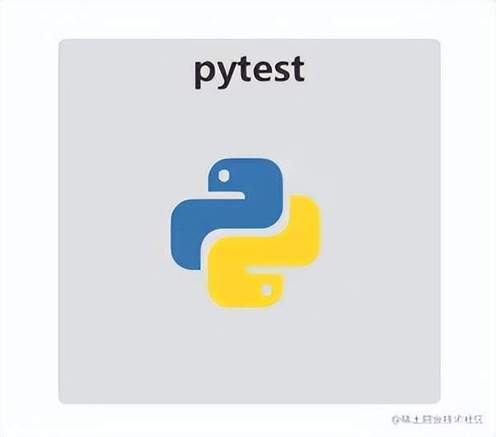
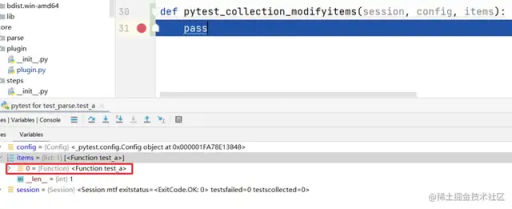
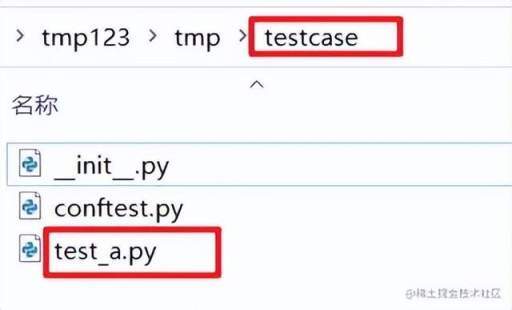
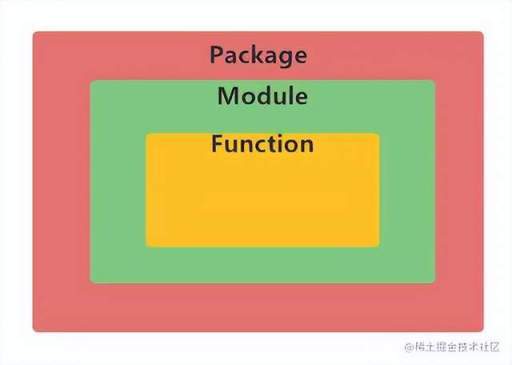

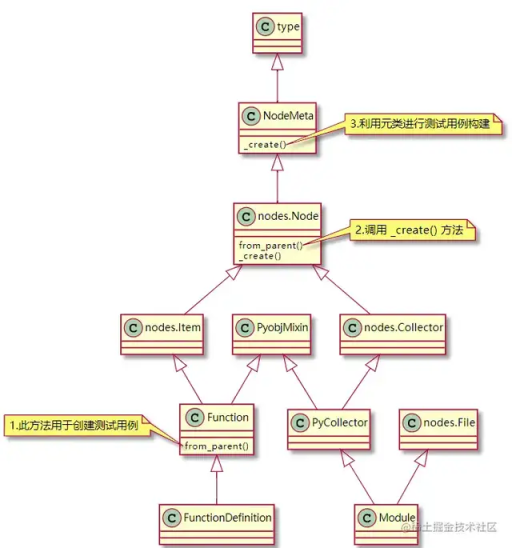




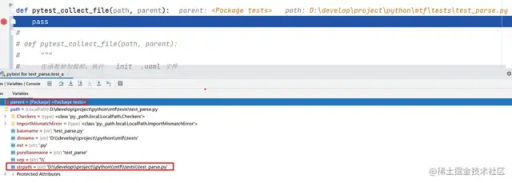















评论